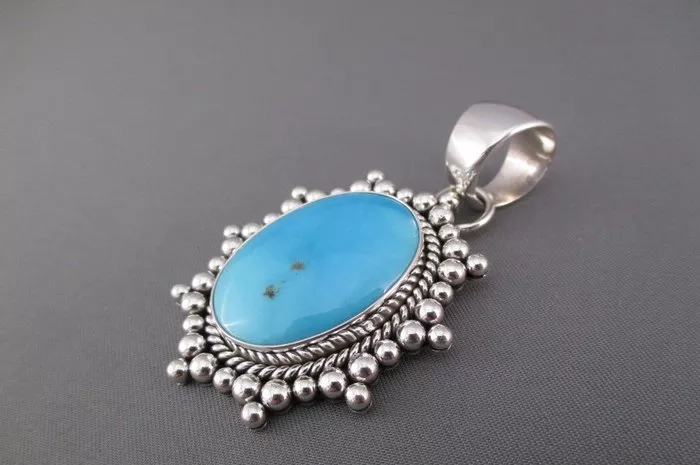Turquoise has captivated human interest for centuries, admired for its stunning hues and cultural significance. As a mineral, turquoise is often utilized in jewelry and ornamentation, prompting curious minds to explore its properties. One common query among enthusiasts is whether turquoise exhibits magnetic attraction. In this article, we delve into this intriguing question, exploring the scientific principles behind magnetism and the composition of turquoise.
Understanding Magnetism
Before delving into the magnetic properties of turquoise, it’s essential to grasp the fundamentals of magnetism. At its core, magnetism is a phenomenon characterized by the attraction or repulsion between objects. This force is primarily exhibited by certain materials, notably iron, nickel, and cobalt, which possess magnetic properties due to their atomic structure.
Magnetism arises from the alignment of magnetic moments within these materials, generating a magnetic field that influences nearby objects. When exposed to a magnetic field, materials can either be attracted towards the source of the field (paramagnetic or ferromagnetic) or repelled from it (diamagnetic).
Types of Magnetism
Paramagnetism: Materials that exhibit paramagnetism are weakly attracted to magnetic fields. This attraction arises from the alignment of unpaired electrons within the material’s atoms when subjected to an external magnetic field. However, this attraction is typically too weak to be discernible without sensitive instruments.
Diamagnetism: Diamagnetic materials, on the other hand, are repelled by magnetic fields. This repulsion occurs due to the induced magnetic moment opposing the external magnetic field. While diamagnetic materials can repel a magnetic field, the effect is generally weak compared to paramagnetic or ferromagnetic materials.
Ferromagnetism: Ferromagnetic materials exhibit the strongest magnetic properties among the three types. These materials can become permanently magnetized, retaining their magnetic properties even after the removal of an external magnetic field. The alignment of atomic magnetic moments within the material results in a net magnetic field, leading to noticeable attraction or repulsion with magnets.
Composition of Turquoise
To understand whether turquoise sticks to a magnet, it’s crucial to examine its composition. Turquoise is a hydrous phosphate mineral primarily composed of copper and aluminum. Its characteristic blue-green coloration is attributed to the presence of copper ions within its crystal structure. Additionally, turquoise may contain traces of other elements such as iron, zinc, and calcium, which can influence its physical properties.
Given turquoise’s composition, it is essential to assess whether any of its constituent elements exhibit magnetic properties that could affect its interaction with magnets.
Magnetic Properties of Copper, Aluminum, and Other Constituents
Copper and aluminum, the primary components of turquoise, are diamagnetic materials. This means they are inherently repelled by magnetic fields. While copper does possess some paramagnetic properties at high temperatures, its diamagnetic behavior dominates at room temperature, rendering it non-magnetic in practical applications.
Traces of iron, zinc, and calcium found in turquoise may introduce magnetic elements into its composition. Iron, in particular, is a ferromagnetic material and can impart magnetic properties to compounds in which it is present. However, the concentration of iron and other magnetic elements in turquoise is typically minimal, making their contribution to the overall magnetic behavior negligible.
Experimental Investigation
To determine whether turquoise exhibits magnetic attraction, experimental investigations have been conducted using various methodologies. These experiments involve subjecting samples of turquoise to magnetic fields and observing their response.
In one experiment, small samples of turquoise were placed near magnets of varying strengths. Despite repeated attempts, no observable attraction or repulsion between the turquoise and magnets was detected. This observation aligns with the expected behavior of diamagnetic materials, which are repelled by magnetic fields.
Further experiments involved more sensitive magnetic measurement techniques, including magnetometers and SQUIDs (Superconducting Quantum Interference Devices). These instruments can detect even weak magnetic interactions, providing insights into the magnetic properties of materials.
Consistent with previous findings, these sensitive measurements revealed no significant magnetic response from turquoise samples. The absence of detectable magnetism reaffirms turquoise’s diamagnetic nature and its inability to stick to magnets.
Conclusion
In conclusion, turquoise does not stick to magnets due to its diamagnetic properties. Despite containing elements such as copper and aluminum, which are diamagnetic, and traces of iron, which is ferromagnetic, the overall composition of turquoise results in a material that is repelled by magnetic fields.
The experimental investigations conducted to assess turquoise’s magnetic behavior consistently demonstrate its diamagnetic nature, with no observable attraction or repulsion towards magnets. This aligns with our understanding of diamagnetic materials, which are inherently repelled by magnetic fields, regardless of their composition.
While turquoise may not exhibit magnetic properties, its allure lies in its vibrant coloration and cultural significance. Whether adorning jewelry or embellishing artistic creations, turquoise continues to captivate hearts and minds, reminding us of the beauty and diversity of the natural world.


